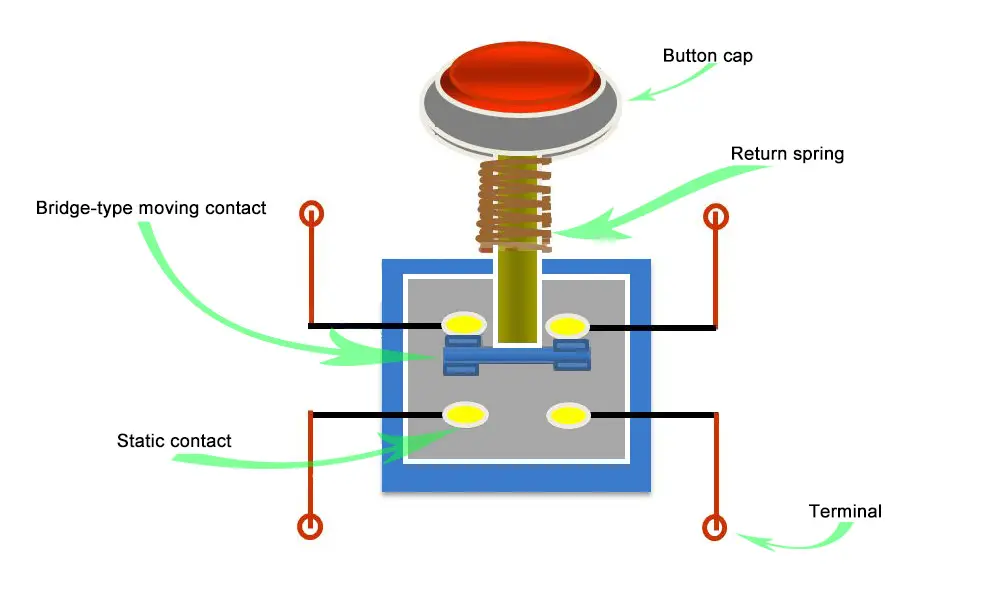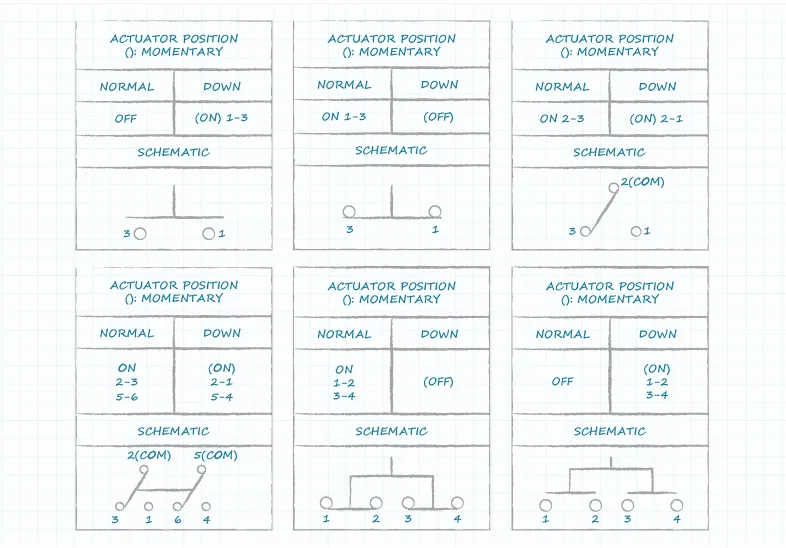What is the Push Button Switch?
A push button switch is a simple yet essential mechanical device used to control electrical circuits. By pressing the button, users can either activate or deactivate the flow of electricity, depending on the switch’s configuration. These switches are widely used in various applications, from industrial machinery to household appliances, due to their reliability and ease of use.

How Does a Push Button Switch Operate?
The operation of a push button switch relies on a straightforward mechanism. When you press the button, it compresses an internal spring and brings two metal contacts together, completing the circuit and allowing current to flow. Upon releasing the button, the spring pushes it back to its default position, separating the contacts and breaking the circuit.
Push button switches can function as either momentary or latching devices:
- Momentary switches only maintain contact while being pressed. For instance, a doorbell operates using this principle.
- Latching switches, on the other hand, remain in their activated state until pressed again. These are commonly found in devices like table lamps.
Additionally, some push button switch include illuminated indicators such as LEDs to provide visual feedback about their status. For example, when the circuit is active, an LED may light up to confirm that power is flowing.
This simplicity makes push button switches ideal for controlling various devices like lights, motors, or even complex machinery. Whether used in industrial control panels or everyday electronics, their intuitive design ensures seamless operation.
How to Connect a Push Button Switch?
Wiring a push button switch might seem daunting at first glance, but it’s actually quite simple with a step-by-step approach:
- Identify the Terminals: Most push button switch have labeled terminals such as Common (C), Normally Open (NO), and Normally Closed (NC). Understanding these connections is crucial for proper wiring.
- Connect the Power Source: Attach one wire from your power source’s positive terminal to the Common pin of the switch.
- Attach the Device Leads: Connect another wire from either the NO or NC terminal (depending on your desired functionality) to the positive terminal of your device (e.g., a motor or light).
- Complete the Circuit: Link your device’s negative terminal back to the power source’s negative terminal.
For more complex setups like 4-pin or 5-pin switches with built-in LEDs, additional connections may be required for illumination. Always consult manufacturer diagrams for specific configurations.
Remember to disconnect power before making any connections and double-check your wiring for safety. Once everything is set up correctly, pressing the button will control your device as intended!
Types of Push Button Switches
Push button switches are categorized as either normally open (NO) or normally closed (NC). Normally open switches, in their default “OFF” state, complete the circuit when pressed. Conversely, normally closed switches, in their default “ON” state, interrupt the circuit when actuated. Beyond this basic classification, the operation of push button switch is further defined by the type of switching circuit they employ.
These circuits are typically single pole, single throw (SPST), single pole, double throw (SPDT), double pole, single throw (DPST), or double pole, double throw (DPDT). An SPST switch features two terminals and is designed to open or close a single circuit, such as turning a motor on or off. An SPDT switch has three terminals, enabling it to control two separate circuits. For example, it can alternate between powering two LEDs or shift equipment from sleep mode to active mode. DPST and DPDT configurations allow simultaneous control of two independent circuits, such as managing one high-voltage circuit alongside a low-voltage one.

FAQs
1.Are Push Button Switches Safe?
Yes, they are safe if installed and used properly. Follow instructions to avoid risks.
2.Why Is My Push Button Switch Not Working?
It might have loose wires, no power, or internal damage. Check and fix these issues.
3.How Do I Know If My Push Button Switch Is Bad?
Test it with a multimeter. No response or visible damage means it’s faulty.


